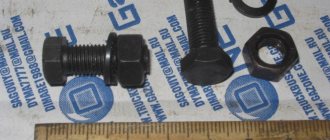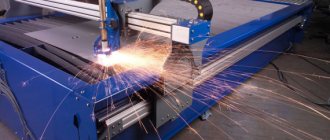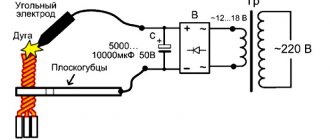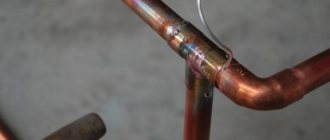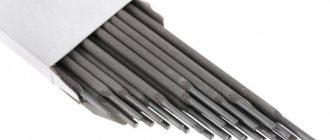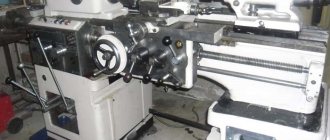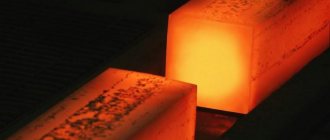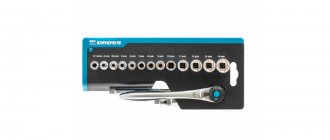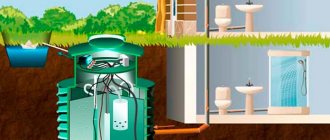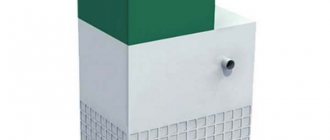Attitude towards the Grover puck abroad
The Grover spring washer can have varieties (a spring of two coils, a disk with a notch, for example, like a spring of two coils, like a washer with a notch)
Despite their importance in ensuring safety in assembled fasteners, spring disks have disadvantages that raise doubts about their effectiveness .
This attitude towards spring disks as locking elements was supported by NASA at the end of the last century. This agency came to this conclusion after the publication of an article about Grover’s washer, where it was concluded that the disk has a stopper effect only at the moment of tightening. When it is clamped on all sides, it turns into an ordinary flat disk without performing locking functions.
Disadvantages of the Grover Washer
But, before talking about the grower’s shortcomings, let’s name its main advantage: low cost and manufacturability.
And now - about the main complaints about this spring washer.
Increasingly dynamic machines require significantly more radical solutions to resist self-loosening of threaded connections. The grower's strength is no longer enough. And a number of experiments (since the late 80s of the 20th century) by German, and after them by American and British researchers, indicate that not all is well with the famous puck. Namely:
- after assembling the unit with the grower, it turns into an ordinary flat washer with a slight tension effect, only slightly increasing the friction force between the turns;
- “biting” the washer into the metal when unwinding does not provide sufficient resistance to it;
- In almost all cases, the washer cannot be reused due to the presence of residual deformation.
In this connection, on many modern models of foreign technology you can often see the washer replaced with other elements.
Spring washer
Why is urea needed in cars
? Spring washers of the disc type: a - solid; b - split.
The use of spring washers inside gearbox housings is not permitted.
| Towards the determination of electrodynamic forces upon contact of two contact elements. |
The use of spring washers significantly reduces the stress in the bolts.
| Nut locks. a - locknut, b, c - cotter pin, d - spring washer. |
The action of the spring washer is combined - the spring washer holds the bolt in a tense (stretched) state, and the sharp edges of the washer mechanically prevent the nut from being unscrewed.
In addition to spring washers, various standard and special lock washers are used to prevent self-unscrewing of fasteners. A cotter pin is a piece of bent wire with a semicircular cross-section.
Using a spring washer on the back of the radiator reduces this phenomenon to a minimum, since in this case the aluminum, expanding, presses on the washer, and not on the copper.
The dimensions of spring washers are taken from GOST 6402 - 70, which lists their dimensions, material and coatings.
The dimensions of spring washers are taken from GOST 6402 - 70, which lists their dimensions, material and coatings. Depending on the sizes b and s, spring washers are divided into light ones, conventionally designated by the letter L, heavy ones - T, normal ones - N and extra heavy ones - OT.
The petals of the spring washer of the piston lubrication ring should be evenly spaced to a diameter of 135 - 136 mm. The lubricating ring should extend beyond the piston disc along its entire circumference by 1 - 2 mm.
The use of spring washers inside closed cavities of gears is not permitted. The countersunk screw heads of the fasteners must be completely recessed into the countersunk holes. The ends of screws, bolts, and studs should protrude 1-2 threads above the nut. The studs should sit tightly in their sockets and not loosen when the nuts are unscrewed.
| Fastening with a screw strip.| Fixing with a split nut. |
Fixation with spring washers is a common and reliable method. It is especially suitable for frequent disassembly of connections. This method is technologically advanced, since spring washers are produced in large quantities. Fixation with bend washers is more reliable than fixation with spring washers. The washers are produced by stamping using mass technology. This method is reliable and widely used in mechanical engineering. Locking with special friction nuts is convenient, as it does not require additional parts. This method is reliable, but manufacturing special self-locking nuts requires additional costs.
| Locking devices with special locking elements. |
Varieties, material and manufacturing methods
The product in question is manufactured taking into account the standards established in GOST 6402-70. It specifies what materials and methods should be used. Among the features of the choice of metal, we note the following points:
- It is allowed to use steel, as well as bronze and some other non-ferrous alloys.
- Hardness should vary from 40 to 48 HRC when using common steel grades. If bronze is used, the value is at least 90 HRC. The weight and some other indicators largely depend on the type of material used.
- During production, various methods can be used, but the appearance of cracks, scale, burrs and other defects is not allowed. In some cases, only minor defects are acceptable that do not affect the performance characteristics of the product.
- To identify the main qualities, a flat washer is subjected to various tests.
A situation often occurs when, in the manufacture of a spring washer, special spring steel is used, which has special performance characteristics.
To achieve the required properties, heat treatment is carried out, due to which the hardness increases and the brittleness decreases.
Manufacturing and materials for the grower
Why do you need car crankcase protection?
The production of such spring washers occurs strictly in accordance with GOST 6402−70. Several materials are used to make parts:
- Steel.
- Bronze.
- Non-ferrous alloys.
Typically, the hardness of metal products is in the range of 40–48 HRC. If St 70 is used, this figure can be increased to 50 HRC. The hardness of a bronze grower should be above 90 HRC. Parts are considered defective if the following are found on the surface:
- Burrs.
- Scale.
- Cracks.
- Corrosion.
The current standard allows for small defects located on the cut, traces of scale that cannot be separated. They do not have any effect on the dimensions of the part, as well as its strength characteristics.
The product will not be rejected if a slight trapezoidal cross-section is detected. In this case, the height of the part must be within acceptable limits. Finished products must be subjected to control tests. The Grover is squeezed several times until the diverging ends form one flat surface. This state is maintained for 24 hours. The height of the streaks should not exceed 1.65 times the thickness of the washer. Chips and cracks are not allowed.
Several types of washers are produced in production, with the dimensions specified in GOST. They are divided into groups:
- Ordinary.
- Heavy.
- Particularly heavy.
- Lungs.
The main material for the production of growers is spring steel. The finished part undergoes heat treatment, giving it high strength and resistance to various external influences. Heat treatment also reduces the fragility of the part. To protect parts from corrosion, they are galvanized.
The product comes in several shades:
- White.
- Blue.
- Rainbow.
Yellow chrome plating is also used to create an anti-corrosion layer. The outer surface of the washer is saturated with chromium. It protects the product from increased wear and also increases the hardness of the product.
Scope of application of hardware
Without fasteners, no production can exist. Almost no industry can do without spring washers. These products have become indispensable in many mechanisms. This is especially true for components that experience strong vibration or heavy loads that cause involuntary loosening of the nuts.
Such systems usually carry a high level of responsibility, so any weakening, especially complete unscrewing, can cause dire consequences.
However, there are several times when it is better not to install spring washers. The Grover stops thanks to its sharp edges. When fully tightened, the edges of the washer begin to bite into the metal surface with force. As a result, if it has little hardness, cutting will leave a noticeable mark. Therefore, such parts cannot be used in conjunction with soft metals. The surface of these products will be damaged.
The most important parameters of such fasteners are:
- Section of the ring.
- Width.
- Height.
The elastic force directly depends on the cross-section of the product. The larger it is, the stronger the elasticity of the part. Moreover, such changes do not in any way affect the coefficient of elastic deformation. The distribution of tightening force is uneven. The greatest importance is in the area where the ratchet teeth are located.
Purpose and production
This part is a metal ring with a cut at an angle of 70 degrees relative to the plane. The cross-section can be square or rectangular. The ends of the ring are spread in opposite directions so that the angle of the cut would prevent it from unwinding, digging into the metal.
The washer-grower is designed to prevent spontaneous detachment of parts with threaded fastening due to the action of various dynamic loads. This connecting piece is installed under the head of the bolts or between the screw nut and washer.
This washer is made from carbon steel, which is subsequently hardened. After heat treatment, internal stress disappears in parts made of spring steel, strength and resistance to external factors increase.
At the same time, the degree of fragility decreases. A protective layer is applied on top by chrome plating or galvanizing. It is the greater hardness of the washer compared to the fastener material that ensures “biting” into the metal and fixing it.
There are also parts made from other materials - aluminum, brass or bronze. They are preferred for use with soft metal fasteners. In the grower's photo you can see varieties of parts on the plane of which a roughness effect can be created for greater friction and locking.
Washers of this type are divided into three groups:
- normal;
- heavy;
- especially heavy with a square cross section;
- lightweight with a rectangular cross-section.
Positive and negative aspects of the specialty
Why is a generator overrunning clutch needed? checking and dismantling the mechanism
Before choosing a specialty, you will need to know not only the functional responsibilities, but also what positive or negative aspects this specialty has.
So, the advantages include:
- high demand for this specialty in the labor market, especially in the jewelry industry;
- fairly high wages;
- the opportunity to engage in creativity;
- It is not necessary to look for work in government agencies; you can register as an individual entrepreneur.
It is worth mentioning the main disadvantages that this specialty has:
- it will be difficult and stressful work, mostly sedentary. As a result, this can lead to the development of diseases of the neck, joints of the arms and hands;
- a large number of tiny dust particles will be constantly inhaled, which negatively affects the lungs and can cause allergies.
We found out what kind of specialty an engraver is, who it is, what are the requirements for those who want to choose this specialty
The history of the Grover washer
Grover's washer appeared at the end of the 19th century during the rapid flourishing of many industries, especially instrument making and mechanical engineering. This has influenced the need for higher quality threaded connections.
Conventional fasteners (nuts, bolts) could not cope with the loads that appeared as a result of technological progress. As a result, the strength of the fastener connections was significantly reduced and led to unexpected actions.
The use of riveted joints was not a way out of the existing situation. They were not always easy to use, and if it was possible to use them, then later difficulties arose during maintenance. A fastener was required that would restrain shock loads and act as a stopper.
The Grover washer, named after the inventor D. Grover, began to have such properties. You can see what it looks like in the grower's photo.
Story
Grovers began to be manufactured at the end of the nineteenth century, when the engineering industry began to need new high-quality threaded connections, since outdated fasteners could no longer withstand modern vibrations and loads in the connections. As a result, the fasteners became loose and unscrewed, causing the mechanisms to fail.
The use of rivets has also become an ineffective method of joining parts, because they are not very convenient to use, as a result, the development of new projects has slowed down. In addition, servicing such products became a rather complicated procedure.
What you need to know about the profession
It is very important to know what functional responsibilities an engraver has:
- be able to create models for an object;
- select the right material for the job;
- choose the right processing methods and methods, as well as the necessary tools;
- carry out engraving of any complexity;
- be able to bring work to perfection;
- sharpen engraving tools;
- carry out adjustment and adjustment of all necessary machines and devices necessary for engraving.
It is important to know where a specialist can work:
- various public or private jewelry workshops;
- in art workshops;
- in stores that sell gifts;
- in enterprises related to printing, textiles, or pulp and paper mills;
- in organizations where funeral services are provided, in particular, the production of monuments.
Fertilizers and chemical composition of the soil mixture
At the moment, there is a wide selection of specialized fertilizers for hemp; when feeding the plants, it is worth remembering that it is better not to top up than to overdo it. Thematic sites, in particular grow reports, will help you choose a line of fertilizers for hemp; in them you can see in what proportions and what fertilizers can be used.
Recently, special sets of fertilizers designed for the entire life cycle of cannabis have been gaining popularity. An example is a set of Flora Series mineral fertilizers, consisting of three ingredients.
Each of them is designed for a specific stage of plant development. The first helps the plant grow large and lush, the second strengthens the root system and helps form inflorescences, the third contains all the necessary secondary nutrients and is able to stabilize the pH level of the soil.
It is also worth mentioning the important role of soil acidity (Ph) and its electrical conductivity (EC). It is better to maintain their values in the ranges of 5.5 – 6.5 and 1.0 – 2.0, respectively.
Growing marijuana
The preparatory stages are over, let's talk about the process of hemp cultivation itself. Conventionally, it can be divided into 5 stages:
- Germination and first shoots;
- Vegetative stage;
- Bloom;
- Harvesting;
- Drying, curing in preparation for further storage.
Germination
With the germination of hemp seeds, everything is very clear; the main thing is to create optimal conditions for awakening life in the seed. After the seed has sprouted for the first time, it will need a lot of light, observing the light regime of 18/6. When the sprout has grown stronger and has sprouted its second or third pair of leaves, it can be transplanted into a pot or planted in open ground.
At this stage, hemp is gaining strength and growing by leaps and bounds. It is during this period that the grower has the opportunity to shape the future hemp bush using methods to increase the yield of hemp. The active growth of cannabis is accompanied by an immodest appetite for the elements: nitrogen, magnesium and calcium.
During the vegetative stage, hemp actively gains green mass, which commercial growers take advantage of by cloning it, although this method only applies to photoperiod varieties. There is also a serious difference between the flow of vegas in indica and sativa dominant varieties.
Bloom
The sweetest stage of growing cannabis is when every day becomes a challenge. At this time, pre-flowers appear by which the sex of the cannabis can and should be determined. From the beginning of flowering until harvest, the colas begin to swell and bend from the weight of the inflorescences, and the emitted aroma becomes more intense with each passing hour. Fox tails appear, trichomes cover the inflorescences and leaves with a thick layer. Hemp at this time needs increased nutrition, in particular, the dosage of phosphorus and potassium can be doubled.
Harvesting
The end of flowering is characterized by darkening of the foxtails and cloudiness of the trichomes; if more than 50% of the glands have taken on an amber color, then it is time to begin harvesting.
BUT! To collect a truly powerful and tasty stuff, you should predict the moment of harvesting 2 - 3 weeks in advance, this will help to shed the plant, i.e. water with clean water without fertilizing, which will help get rid of residual fertilizers and make the taste cleaner and more pleasant. Do not be alarmed by the yellowing of the leaves; this is a normal reaction.
The last watering is recommended to be done 1 - 2 days before cutting the bush, it is also recommended to reduce the humidity level to the maximum. These procedures will make hemp manicuring easier and increase the potency of the resin.
Drying
Mistakes at this stage are unforgivable. Freshly picked manicure buds still contain moisture, which negatively affects its taste and complicates storage. To prevent the appearance of mold and drying out, it is better to observe the following conditions:
- Temperature within 18 – 24 C;
- The complete absence of light, under its influence, THC molecules disintegrate;
- Air humidity no more than 50%;
- Good ventilation.
If everything is done correctly, drying will not take more than 8 - 10 days, after which you can cure it if you wish.
Brief conclusion
Growing cannabis is a labor-intensive and interesting process, and the joy of the first completed grow is never forgotten. “If you want to learn to swim, swim” - this phrase is also suitable for growing marijuana, the skill comes with experience, fortunately there is a large selection of inexpensive autoflowering varieties that you can get your hands on and understand the basics of growing and, maybe, after a few years, your variety will be awarded at the next High Times cannabis cup.
- Sidbank Semyanych (European Countries) Feminized Autoflowering Spiritual Peace Skunk X Lowryder
- Kannabia Seeds (Spain) Feminized Autoflowering Strong euphoria Kaboom X Ruderalis Indoor: 400 g/m² Outdoor: 180 g/plant Sativa dominant 13%
*All information provided is for informational purposes only and does not constitute guidance or a call to action.
**We remind you that the use of marijuana seeds as seed material (growing hemp for the purpose of obtaining a plant) is prohibited by the Criminal Code of the Russian Federation. You can find out more about the law here.
Indoor or outdoor
A treasured marijuana bush at home is a dream for fans of this plant. Suitable places for growing:
- In the living room, using a grow tent or grow box;
- Pantry;
- Utility premises: garage, barn, cellar, etc.;
- Balcony, loggia;
The space for growing is limited only by imagination and directness of hands; some craftsmen collect decent yields of hemp even in system blocks.
When selecting premises, the following factors should be taken into account:
- The ambient temperature should be in the range of 20 – 30C, which corresponds to most residential premises;
- Access to the electrical network for connecting equipment (light, ventilation, etc.)
- Moderate humidity.
The article Growing Marijuana at Home describes in detail the procedure and comparison of different approaches.
By choosing open ground for growing cannabis, the grower makes his task somewhat easier. Costs are significantly reduced, there is less stress when guests arrive, and the role of plant growth regulator returns back to nature.
Washer compliance with GOST 6402
The grower is manufactured as specified in GOST (spring steel 65G), followed by heat treatment. This reduces the internal stress of the metal, increases its strength and resistance to external influences, and also reduces the fragility of the product.
Grover washers can be produced with or without coating. The applied coating improves the anti-corrosion properties, and the chrome coating also gives greater hardness to the washer and increases service life.
The sharp edge of the disk also stops spontaneous unscrewing due to the emphasis on the metal, therefore, when it is necessary to unscrew the fastener, mechanical damage (scratches) usually remains on the nut from the sharp edge as if from a carver.
It is not recommended to use the disk in an assembly with fasteners a second time, and when this recommendation is ignored, the fasteners are unscrewed at the most inopportune moment.
Production
Such unique clamps are mainly made of steel. When the production of something requires it, they are made of bronze or other non-ferrous metal. All products have a Rockwell hardness rating:
- made of steel within 40-48 HRC;
- made of bronze from 90 HRC.
Scuffs, scales and other defects, including corrosion, are rejected during the manufacture of hardware. Other minor defects that cannot affect the dimensions and strength of the part are allowed.
The washers are tested by compressing them to a flat state, then keeping them in this position for twenty-four hours, after releasing they should return to their original state.
The grower's weight can be of four categories:
- light (L);
- normal (N);
- heavy (T);
- especially severe (OT).
GOST 6402-70 specifies the requirements for this fastening. It describes the following characteristics:
- size;
- degree of strength;
- materials;
- types of coverage.
Engraving technique
Initially, black paints were used to make engravings, with which it was impossible to draw spots, create chiaroscuro, or use other artistic techniques. Such limitations did not allow using all the advantages of engraving and created a lot of problems, which the Venetian Hugo da Carpi managed to solve. The inventor proposed using several boards with the same pattern, but with different paints applied to it.
The new technique was called color woodcut. It made it possible to use engraving to create artistic masterpieces, but it was labor-intensive and therefore was not widely used. Only at the end of the 19th century did it become possible to use this type of engraving on a large scale.
Engraving, or woodcut, regardless of the color or paint used, made it possible to make many identical drawings. The original print was used until the image embossed on it was completely erased.
Wood was not used as a board for drawing for long; already at the end of the 15th century, engravers learned to make chisel engravings on metal, in particular, copper boards were used. Copper made it possible to independently determine the length and width of the lines, the drawing was deeper, the print was clearer and more saturated. Thanks to mastering the technique of engraving on metal, artists were able to create quite complex designs.
The development of engraving art could not stop at using just a few materials. At the beginning of the 17th century, engravers invented a new technique for creating boards from which an impression was made, called “etching.” From then on, the board was influenced not only mechanically, pressing it against the material on which the imprint was to appear, but also chemically.
The new execution technique made it possible to improve the art of engraving, creating not individual images, but portraits, still lifes, and satirical drawings. Especially if color engraving was used to make the print. For some time now, any work of art could be turned into an engraving.
Wedge lock washer INFIX
An effective solution to the problem of spontaneous unscrewing is INFIX wedge washers, which guarantee the reliability of the threaded connection under conditions of vibration and dynamic vibrations.
The INFIX wedge washer system consists of two identical washers, each with wedge ridges on one side and a radial serration on the other. When assembling a bolted connection, the washers are installed with their wedge sides facing each other. The wedge angle α is greater than the thread helix angle β.
During the tightening process, the wedge lugs come into contact and the washers cannot rotate along the wedge surfaces in the tightening direction. Radial teeth are pressed into the mating surfaces, and a rigid connection is formed between them. When unscrewing, including spontaneously, the wedge surfaces of the washers create additional axial force, which increases the torque required for unscrewing.
Advantages:
- does not require preliminary preparation and cleaning of parts
- possible repeated use without loss of quality
- easy installation and dismantling
- certified fastening system
- designed for systems operating under vibration and dynamic loads
You can read more about these washers in the article on our website or watch a review video on the TsKI channel on YouTube.
Types of engravings
Depending on the nature of the drawing, the following types of this art are distinguished.
Convex. An engraving made primarily on wood. Until the end of the 18th century, flat, polished, longitudinally cut boards were used to make such engravings. The selected board was primed, and a drawing was applied on top of the primer using a pen. The lines on both sides were cut off, and the wood between them was knocked out with a chisel to a depth of up to five millimeters. The result was bulges, onto which paint was applied using a special roller. Possessed similar qualities:
- Relief engraving. Allowed me to make just an impression.
- End woodcut. Allowed you to make up to 1500 impressions.
- Linography. Up to 500 prints could be made.
In-depth. A type of engraving produced mechanically or chemically. A design consisting of in-depth combinations of lines and dots is made in a pre-prepared plate of copper, brass, zinc or iron.
Paint is applied into the resulting recesses using a roller, the plate is covered with wet paper on top and rolled between the rollers of the printing press. A variety of in-depth engravings are:
- chisel engraving;
- etching;
- drypoint engraving;
- soft varnish;
- dotted engraving;
- aquatint;
- mezzotint;
- Lavis.
Flat. A type of engraving produced using the lithography technique. A special type of limestone is used as the material for making this type of engraving. The limestone plate is smoothed, polished, or, conversely, honed until a rough surface appears.
Lithographic ink is applied to the prepared plate using a special pencil. The finished drawing is coated with acid and gum arabic. Such etching makes the areas covered with the design susceptible to paint. In this case, the space free from the drawing begins to repel the paint.
The finished board is coated with paint, after which any print can be made from it.
Colored. The technique for obtaining color engravings is described above. Today, color engravings can be found everywhere, although the technique of their production has remained virtually unchanged.
Engraving as an art form was popular in the Soviet Union. Engraving was used to make propaganda posters and leaflets. Modern artists rarely practice making engravings, so this technique is again used for the production of printed materials.
How can I replace a spring washer on a Grover?
And there are many replacement options. We will list the most common:
- Self-locking nut. A plastic insert is mounted in its upper part, dampening vibration vibrations and preventing the connection from self-unwinding. This is the most expensive, but today it is the most effective and technologically advanced method.
- Spring disc washer. It obviously uses some of the original grower's original idea, but is even easier to manufacture.
- Crown nut. Requires drilling of the counter fastening element and subsequent fixation with a cotter pin. Provides reliable, but partly stepwise, pairing of parts.
- Serrated flange. Almost a notched washer, spliced with a nut. The effect of use is clear.
- Nut with cylindrical belt. Requires the counter part to have a longitudinal slot (or slots)
- Lock washer. It has many teeth that prevent the joint from unwinding.
- Washers with antennae. They require a hole or recess for one of the tabs in the part, and the remaining tabs are bent at the edge of the nut or screw head. There are many design options for such washers.
- Adhesive fixation. Various compounds applied to the thread, after polymerization, prevent disassembly of the threaded connection.
- Wire locks. It is used when several fasteners are located nearby - usually bolts or screws.
It is also important to remember that even simple painting can be a sufficient fixation factor. And in more severe cases, lateral fixation of the connection with a screw or pin is used, riveting of the protruding thread, and in the most severe cases, welding, but the last 2 options are practically not dismountable.
Dear readers, if you have any questions, please ask them using the form below. We will be glad to communicate with you
